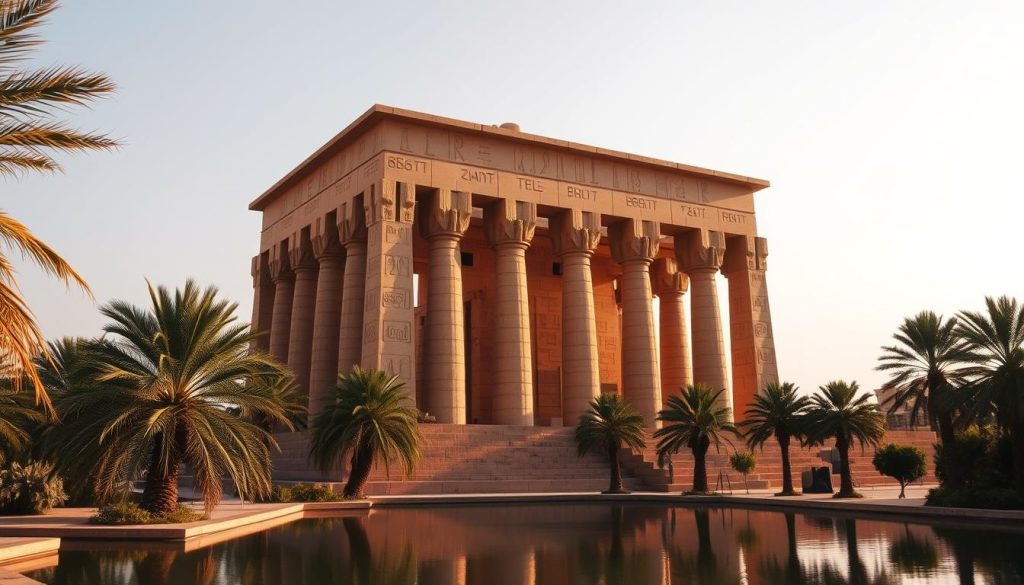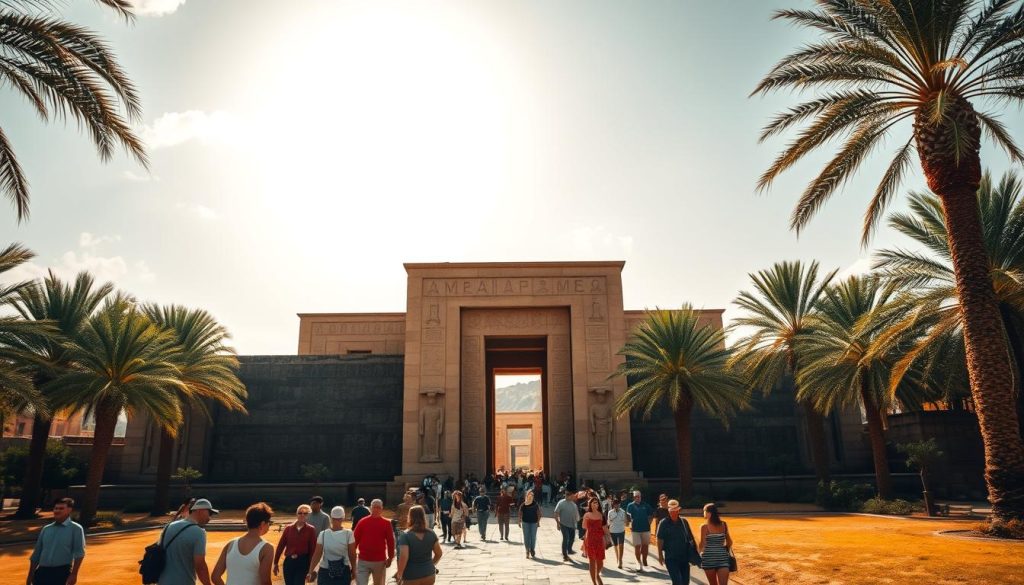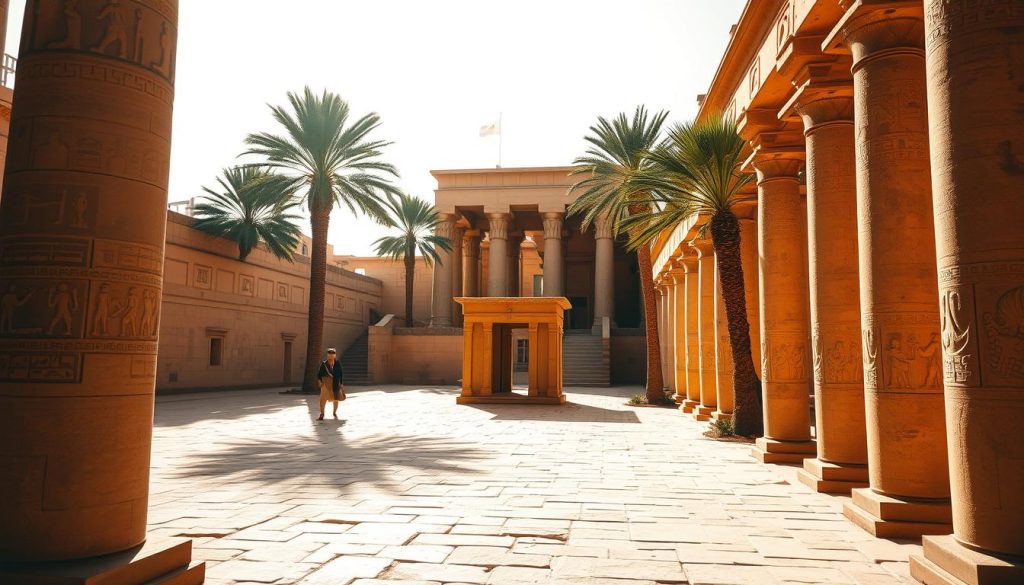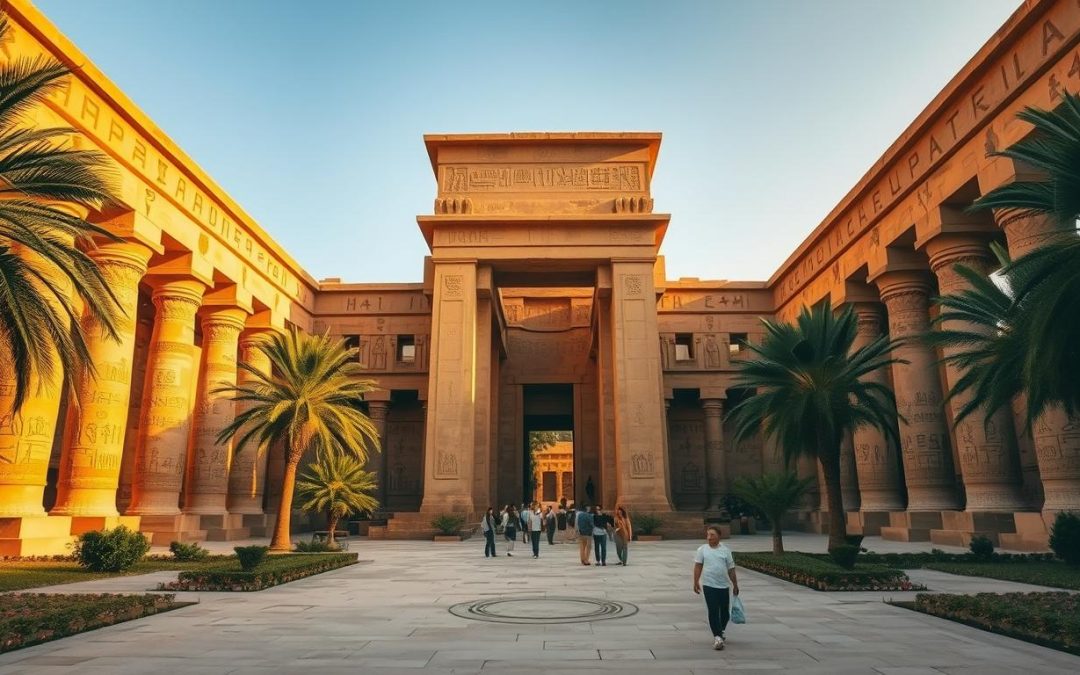Have you ever wondered what it feels like to step back in time and walk through a place where history comes alive? Nestled in Upper Egypt, near the vibrant city of Luxor, lies a hidden gem that promises an unforgettable journey into the past. This location is not just a site; it’s a gateway to ancient traditions and monumental architecture.
Known for its well-preserved structures, this temple stands as a testament to the ingenuity of ancient civilizations. Its intricate carvings and stunning design offer a glimpse into a world that thrived thousands of years ago. Whether you’re a history enthusiast or simply curious, this place will leave you in awe.
Exploring this site is more than just a tour; it’s an experience that connects you to the roots of human creativity and spirituality. Ready to uncover the secrets of this ancient wonder? Let’s dive in and discover why this destination deserves a spot on your travel itinerary.
Key Takeaways
- Discover one of the most well-preserved ancient sites in the region.
- Learn about the historical and cultural significance of this temple.
- Explore its proximity to Luxor, a city rich in history and attractions.
- Understand why this location is a must-visit for travelers.
- Gain insights into the architectural marvels of ancient civilizations.
Dendera, Egypt: Best Things to Do – Top Picks: Exploring History & Culture
Step into a world where ancient traditions and architectural marvels converge. The temple in this region is a masterpiece that reflects the ingenuity of past civilizations. Its origins trace back to the XXX Dynasty under Nectanebo I, with its completion during the Greco-Roman period. This blend of eras created a unique fusion of styles and beliefs.

Uncover the Ancient Temple
The temple is renowned for its hypostyle hall, where tall columns with Hathoric capitals stand as a testament to ancient craftsmanship. These features are not just architectural wonders but also symbols of spiritual devotion. High priests once conducted ceremonies here, connecting the physical structure to the divine.
Greek and Roman influences are evident in the design, blending seamlessly with traditional Egyptian elements. This fusion highlights the cultural exchange that shaped the region’s history. The sanctuaries dedicated to multiple deities further emphasize the temple’s role as a spiritual hub.
Celebrating Hathor and Legendary Traditions
At the heart of this site lies the worship of Hathor, the goddess of love and motherhood. Festivals honoring her were central to local traditions, drawing people from far and wide. One of the most significant rituals was the river procession, a vibrant celebration of faith and community.
These events were more than just religious practices; they were a way of life. They showcased the deep connection between the people and their beliefs. Today, the legacy of these traditions continues to inspire visitors, offering a glimpse into a world where spirituality and artistry were intertwined.
Exploring this temple is not just a journey through history but also a celebration of human creativity. Its enduring beauty and cultural significance make it a must-visit destination for anyone seeking to understand the roots of ancient civilizations.
Navigating Your Dendera Visit: Planning and Travel Tips
Planning a trip to this historic site requires some thoughtful preparation to make the most of your day. Whether you’re coming from Luxor or other nearby cities, understanding your transport options is key to a seamless experience.

Finding the Best Transport Options from Luxor and Beyond
From Luxor, the journey to this iconic temple takes about two hours by private car. Hiring a driver or joining a specialized tour ensures comfort and convenience. Many travelers prefer this option, as it allows flexibility in timing and stops along the way.
If you’re traveling from cities like Hurghada, Safaga, or Marsa Alam, organized tours are highly recommended. These trips often include round-trip transportation, making them a stress-free choice. Below is a quick guide to travel times from major locations:
| Starting Point | Travel Time |
|---|---|
| Luxor | 2 hours |
| Hurghada | 4 hours |
| Safaga | 5 hours |
| Marsa Alam | 6 hours |
Custom Tours and Private Transportation Advice
Custom tours offer a hassle-free way to explore this ancient site. Agencies like Egipto Exclusivo provide tailored trips that match your interests. These tours often include knowledgeable guides who can enhance your visit with historical insights.
Private transportation is another excellent option, especially for families or small groups. It allows you to set your own pace and combine your visit with nearby attractions like Abydos. This flexibility ensures a richer travel experience.
Regardless of your choice, planning ahead ensures a smooth and enjoyable day. With the right preparation, your visit to this temple will be both memorable and rewarding.
Discovering the Hidden Gems in Dendera’s Sacred Complex
Beyond the main temple lies a treasure trove of lesser-known wonders waiting to be explored. The sacred complex is a mosaic of structures, each with its own unique tale to tell. From the Iseum to the Roman-era mammisi, these sites offer a deeper understanding of ancient traditions and architectural brilliance.

Exploring the Iseum, Mammisi, and Roman-era Structures
The Iseum, dedicated to the goddess Isis, is a fascinating part of the complex. Its intricate carvings and design reflect the spiritual devotion of the time. Nearby, the mammisi, or birth house, stands as a testament to the worship of Harsomtus, a deity associated with rebirth and renewal.
Roman-era structures add another layer to this historical site. These buildings showcase a blend of cultures, combining traditional Egyptian elements with Roman influences. Together, they create a rich tapestry of history that invites you to explore further.
Marveling at the Enigmatic Dendera Zodiac and Ceiling Art
One of the most captivating features of the temple is the Dendera Zodiac. This ancient artifact, dating back to the 1st century BC, is a stunning depiction of celestial wisdom. Its intricate details reveal the astronomical knowledge of the time.
The ceiling art is equally mesmerizing. It features elaborate carvings that symbolize the connection between the earthly and the divine. As you gaze upward, you’ll notice how the ceiling aligns with notable stars, adding an extra layer of fascination to your visit.
“The Dendera Zodiac is not just an artifact; it’s a window into the minds of ancient astronomers.”
These hidden gems within the sacred complex offer a richer narrative of ancient religious traditions. By exploring them, you’ll gain a deeper appreciation for the ingenuity and spirituality of the past.
Conclusion
Experience the blend of history and artistry in a single visit to this remarkable temple. From the intricate carvings to the awe-inspiring Zodiac, every corner tells a story of ancient traditions and cultural richness. The worship of Hathor adds a spiritual depth that connects you to the past in a profound way.
Planning your tour is simple, especially with convenient transport options from Luxor. Whether you choose a private guide or a group excursion, the journey is as rewarding as the destination. The temple’s ceiling art and Zodiac are must-see highlights that enhance your cultural journey.
Take the leap and explore this historic site. It’s more than a visit—it’s an unforgettable experience that brings ancient stories to life. Start planning your day now and immerse yourself in the magic of this cultural treasure.
The above is subject to change.
Check back often to TRAVEL.COM for the latest travel tips and deals.
Here are some Tours & Sightseeing suggestions that might pique your interests!
